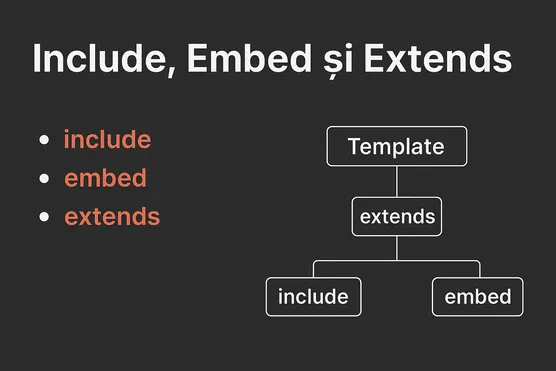Twig Template Inheritance: Include, Embed, and Extends
When working with Twig templates, three powerful tags help you structure and reuse code efficiently: extends, include, and embed.
This article explains how they work, when to use each, and how they relate to one another.
Quick Summary
extends
- Used only once, at the very beginning of a template.
- Defines inheritance (the base layout).
- ❌ Cannot be used inside
includeorembed.
🔹 include
- Inserts a fragment of a template.
- Can be used anywhere (in a simple template, inside a block, inside an
embed, or within anextends). - Does not define its own blocks – it only inserts content.
embed
- Works like
includebut allows you to override blocks inside the included file. - Can contain
includeinside. - ❌ Cannot contain
extends.
Relationship Diagram
Template
│
├── extends (only once, at the very beginning)
│ │
│ └── Blocks (defined in the extended layout)
│ │
│ ├── include (allowed anywhere)
│ └── embed (allowed anywhere)
│ │
│ ├── block overrides
│ └── include (allowed)
│
└── include (works directly in a template, even without extends)Key Takeaways
extendssets the base layout for inheritance. Use it once at the top.includeis best for inserting reusable snippets of template code.embedcombinesincludewith the power of overriding blocks.
By understanding how these three tags interact, you can build Twig templates that are both modular and easy to maintain.
